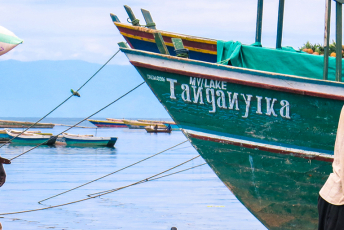Conservationists have expressed concern that the surge in growth of the ivory market in the Southeast Asian nation of Laos will dash the hopes raised by the ivory ban in China. China’s plans have pushed consumers of wildlife products to turn to neighbouring Laos and Vietnam for tusks, horns and skins; demand that has led to the slaughter of tens of thousands of elephants, rhinos and tigers in Africa and Asia.
A recent report by Save the Elephants entitled The ivory trade of Laos: now the fastest growing in the world notes that Laos’s law enforcement on ivory products smuggled in through Vietnam and Thailand is weak.
Most of the ivory that goes through these countries originates from Eastern Africa, where al-Shabaab and the Lord’s Resistance Army are involved in ivory poaching the same way Boko Haram is in Nigeria. These terror groups are partially funded by poaching, piracy and other transnational organised crimes.
Demand for elephant tusks in Asia, seen as a luxury item used for ornamentation and souvenirs, has been driving African elephants toward extinction. This has happened before. In the 1970s, demand for ivory soared worldwide and the continent’s elephant population dropped by 50%. This prompted the Convention on International Trade in Endangered Species of Wild Fauna and Flora (CITES) to ban all international ivory sales.
In 1999 and 2008, CITES allowed a moratorium permitting limited ivory sales in Asia. Instead of satisfying demand for the ivory, this led to higher demand and prices and dramatically increased poaching. The Chinese government has in recent years taken steps to stop the trade in ivory. China's ivory factories were shut down in March and retail outlets are set to shut down by the end of this year.
‘With the end of the legal ivory trade in China, the survival chances for elephants have distinctly improved,’ said Iain Douglas-Hamilton, president and founder of Save the Elephants, in reaction to China’s move. However, he now says ‘the imminent closure of China's legal ivory trade is putting pressure on traders, moving the market underground and across porous borders.’
Ahead of the Chinese ban, between 2013 and 2016, Laos’s retail ivory market has expanded more rapidly than in any other country surveyed recently, with over 80% of ivory products sold in Laos coming from China.
In September, the UN adopted a wide-ranging resolution calling for a crackdown on illicit wildlife trafficking. This was backed by leading conservation organisations including CITES, and governments have adopted bold measures, including banning the domestic ivory trade. This is the case of the UK, which in 2015 was found to be the world’s largest exporter of legal ivory.
If the surge in the ivory trade in Laos remains unchecked, these measures are unlikely to yield any results and another spike in elephant poaching in Africa could be anticipated. This could give rise to similar trends in other transnational organised crimes, including small arms and light weapons proliferation and human and drug trafficking.
Deo Gumba, ENACT Regional organised crime observatory coordinator - East and Horn of Africa







